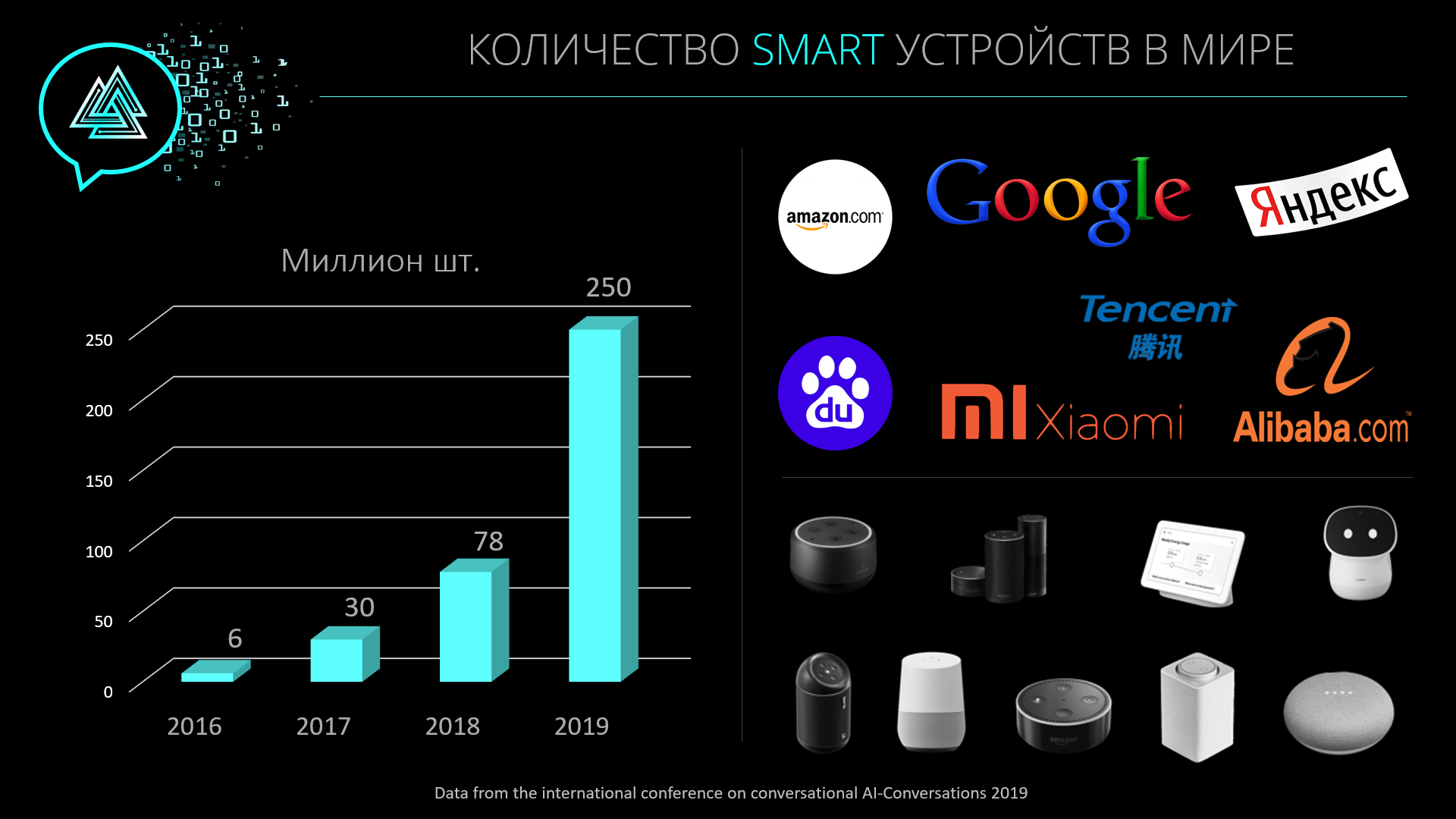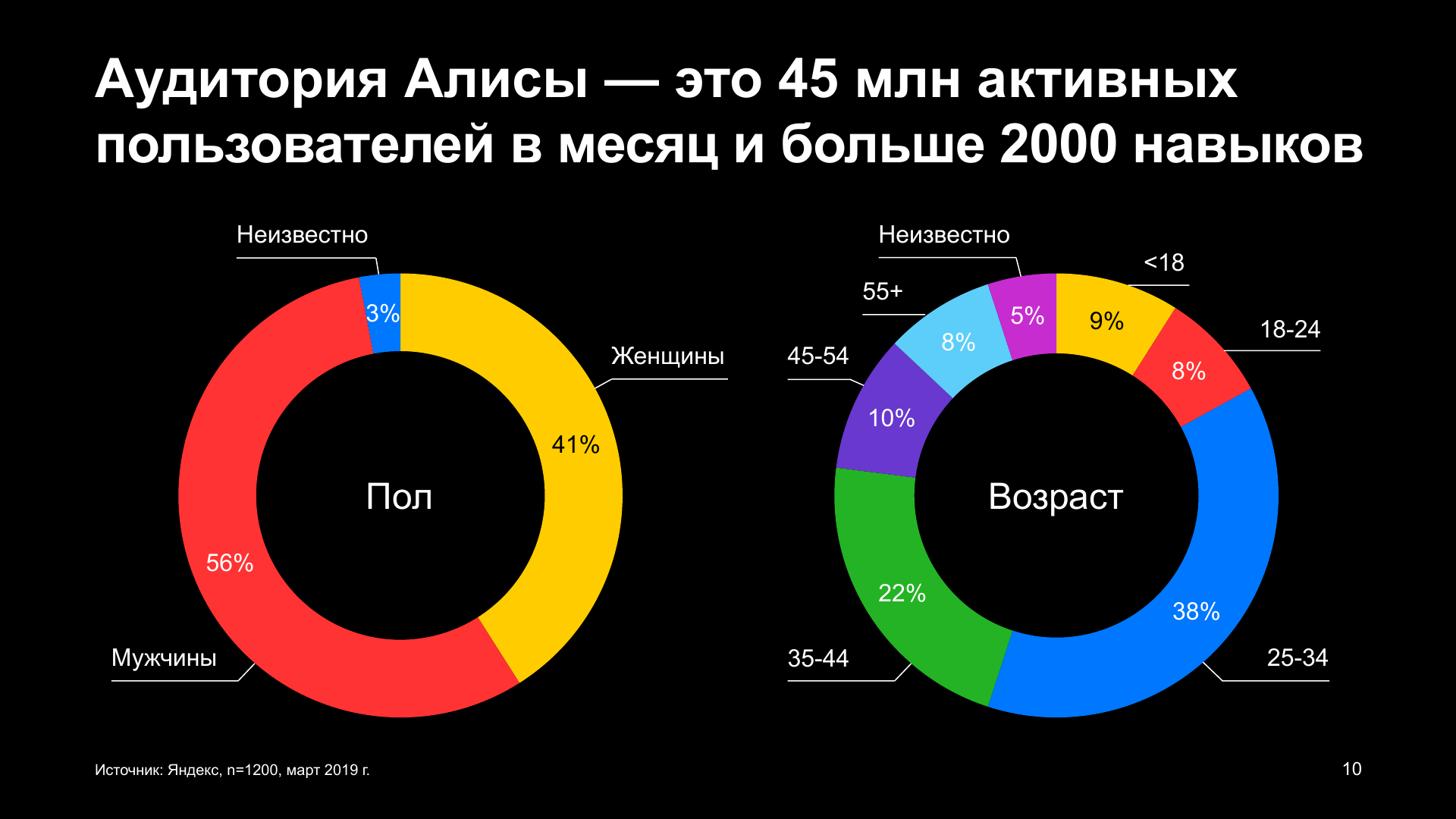Petka bought a soda machine and went to put in the Sahara. A year later, Vasily Ivanovich meets him and asks: - The idea was a bomb, but what are you so gloomy?
“You see, Vasily Ivanovich, when they see a machine with soda in the desert, they shout right away, a mirage, a mirage and pass by.”
1. Market invisible to the layman
The market for hardware devices for voice communication shows the largest growth in the history of hardware electronics.

Google Assistant is pre-installed on 1 billion devices, now let's compare it with the market of mobile devices and applications:

Having an advantage in the number of hardware devices communicating with a person in voice, a catastrophic lack of content is currently visible.
The first graph shows that the market for hardware devices is growing more than 2.5 times over the past 2 years and the curve itself resembles the beginning of the exhibitor. Based on the foregoing, it becomes clear that the projected growth of the content market for voice assistants in the following chart is quite real and logical.

And this is only in Russia.
The presentation of the voice application market to representatives of the business community in Moscow showed complete disbelief in these indicators. The slide with the statistics of the Yandex Alice audience only reinforced the doubt that all this could be true.

In truth, such data from Yandex is even in doubt among the main group of application developers for Yandex Alice, as a post on this topic in their group showed today.
But let's get back to the essence of the issue.
2. The market is real
Further I will move very carefully and confirm every word as a fact in court.
2.1 45% of US residents aged 22-37 years old use voice assistants when shopping.

This is stated in CouponFollow's Millennial Shopping 2019 report. The survey was conducted in January 2019.
It’s not about the fact that they buy with a voice absolutely everything and only with a voice, but nevertheless the indicator is very interesting.
Link.
2.2. 15% of owners of smart speakers in the U.S. say they made voice purchases on a monthly basis at the end of 2018

This is compared to 13.6% who used the voice for retail purchases at the beginning of the year. Keep in mind that this reflects a 10.5% increase in the relative use of smart voice purchases based on the rapid growth of hardware devices. This voice shopping group represents about 4% of US adults
Link
3. The market begins to pulsate at a frantic frequency
Now let's just see how the market develops. If at the beginning there were years between the appearance of changes in the development of the market, then in the final it is days in months, and maybe while I was writing this article the market changed again, see the chronology:

Link